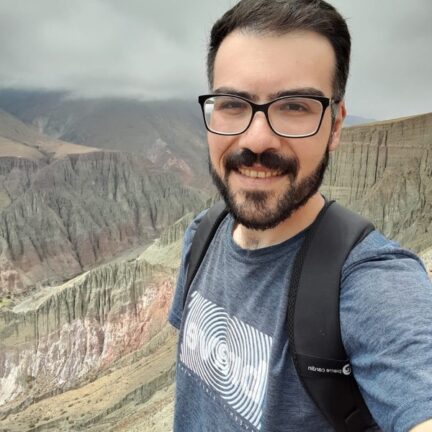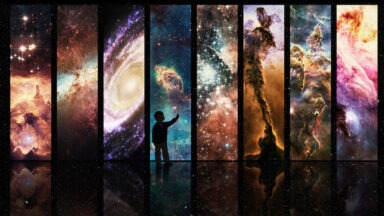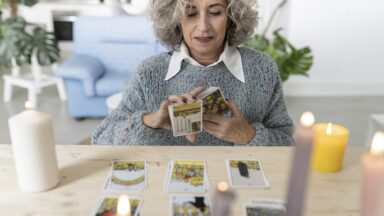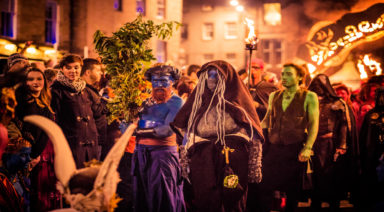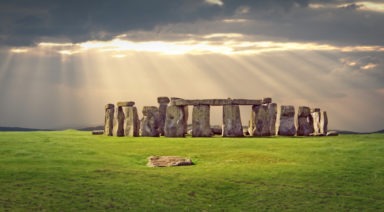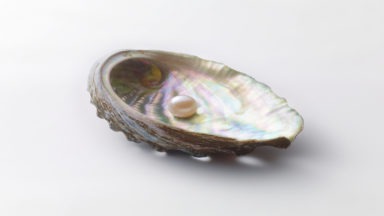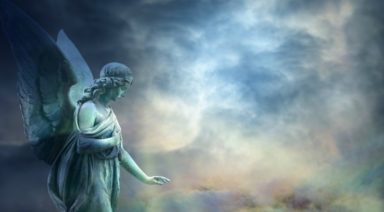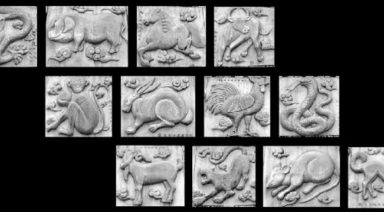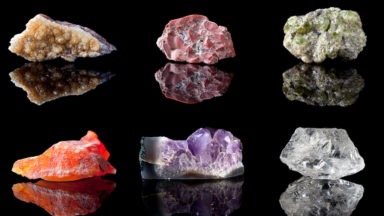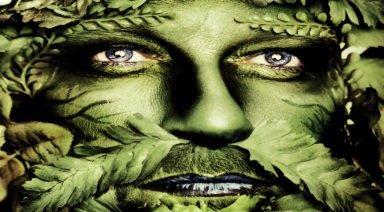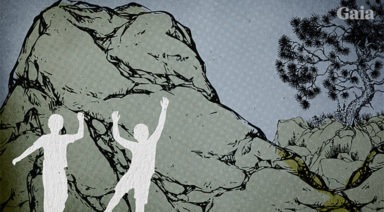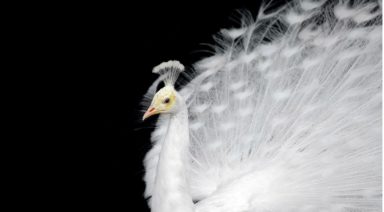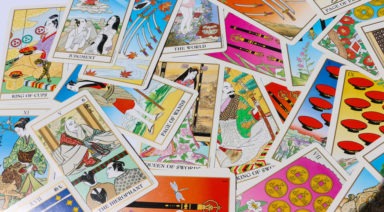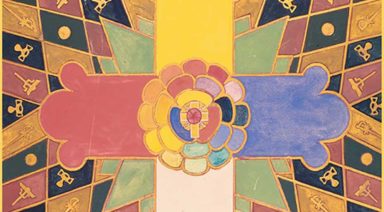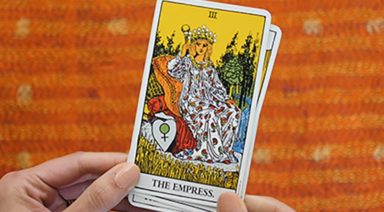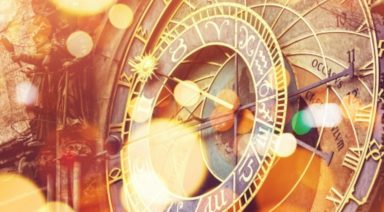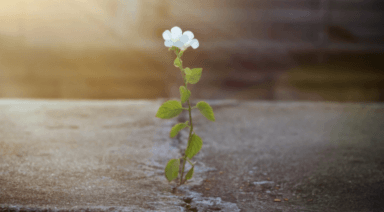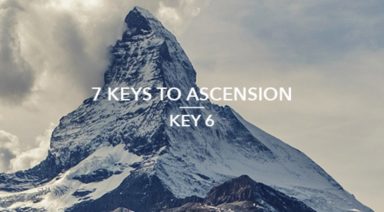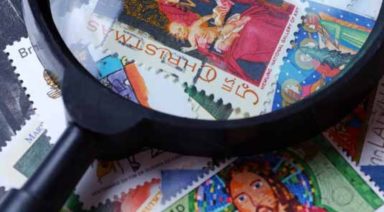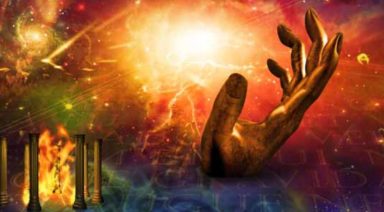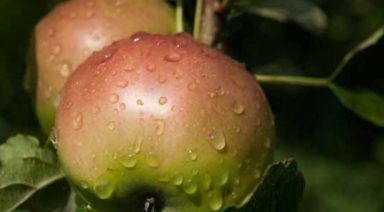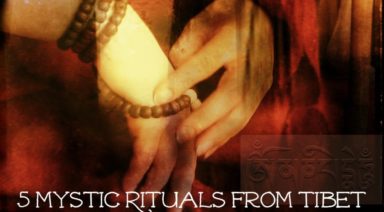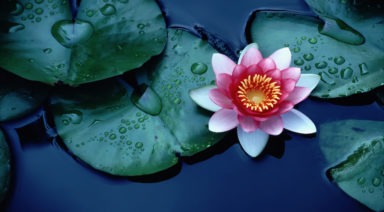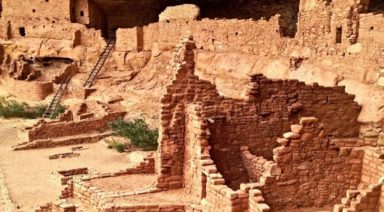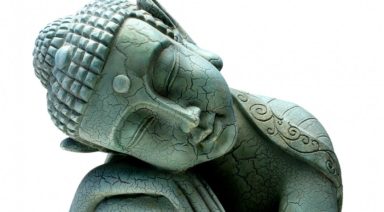How To Know If You Are An Old Soul: Signs And Meaning

The term old soul refers to people who have lived many lives and retain a wisdom that goes beyond what is learned in this incarnation. They often have a mature perspective, strong intuition, and an innate interest in spirituality. In this article, we explore what is an old soul, how to recognize its traits, and what it means on the evolutionary path.
Table of Contents
- What Does It Mean To Be An Old Soul?
- Characteristics Of An Old Soul
- What Is The Mission Of An Old Soul?
- How To Know If You Are An Old Soul
- What Happens When Two Old Souls Meet?
- How To Live In Harmony As An Old Soul
What Does It Mean To Be An Old Soul?
Being an old soul means having gone through multiple lives and experiences in different historical times and contexts. That accumulation of learning is reflected in a deeper outlook on existence, greater detachment from superficial things, and a natural connection with the spiritual and the transcendent. These individuals often feel different from an early age, with a way of thinking or perceiving life that doesn’t always align with their surroundings.
Unlike a young or new soul, which is still exploring the early stages of its journey, the old soul has already undergone numerous evolutionary processes. That’s why it is often drawn to topics such as reincarnation, soul energy, and life purpose. This spiritual maturity is not related to physical age, but to the soul’s conscious journey through time.
Characteristics Of An Old Soul
Although it is not always easy to identify them at first glance, old souls often share certain common traits that reflect their level of consciousness and spiritual evolution. These characteristics can be noticed from an early age and are expressed in the way they think, feel, and relate to the world. Below, we explore some of the most frequent signs that help recognize an old soul.
- Feeling of not fitting into the world: Old souls often feel they see life differently than most people. This perception can lead to a persistent sense of not belonging or being disconnected from social or cultural surroundings.
- Intuitive wisdom from an early age: From a very young age, old souls demonstrate a deep understanding of complex topics without needing to have studied them. They tend to give accurate advice and have a developed intuition that surprises those around them.
- Connection with solitude and silence: These souls deeply value spaces of silence and retreat. They are not afraid to be alone, as they find in those moments a way to reconnect with their inner world and spiritual energy.
- Profound interest in spirituality and the transcendental: Old souls feel a natural calling toward spirituality, philosophy, meditation, or the deeper meaning of existence. They have concerns that go beyond the material and seek answers about the soul, life, and the universe.
- High empathy and emotional sensitivity: They have a special ability to perceive others’ emotional states and connect with their pain or joy. This emotional sensitivity often makes them very compassionate, although it can also lead them to feel emotionally overwhelmed.
- Unusual emotional maturity: Old souls tend to respond with calmness and reflection to situations that might overwhelm others. The way they process emotions reveals a maturity that doesn’t always match their biological age.
- Search for meaning in everything they do: They are not satisfied with the superficial or routine. Old souls need their actions to have a deeper purpose and to be aligned with their spiritual evolution.
- Sense of personal mission: Many times, they feel they came into the world with a clear purpose, even if they can’t define it at first. This inner sense of mission drives them to live consciously and with commitment to their growth.
What Is The Mission Of An Old Soul?
The mission of an old soul is not always visible from the outside, but it is often related to accompanying processes of transformation, elevating consciousness, and serving as a bridge between the spiritual and the earthly. Many times, these souls act as silent guides in their environment, not necessarily in a formal role, but through their presence, wisdom, and ability to understand life from a broader perspective.
Besides helping others, the old soul also has its own internal path: healing accumulated memories, integrating unresolved learnings, and refining its spiritual consciousness. Its mission is not to save the world, but to live authentically, learn with humility, and bring light through its experience. Along that path, its greatest teaching is to live in coherence with what truly matters: the soul’s evolution.
Series such as Initiation, available on Gaia, deeply explore how memories from past lives manifest and how the soul journeys through time and dimensions. In this series, Matías De Stefano shares his personal experience and offers a clear vision of how souls evolve, remember, and prepare to fulfill their purpose in this life and the next ones.

How To Know If You Are An Old Soul
Recognizing if you are an old soul is not based on objective tests, but on observing your way of perceiving life. Many people feel, from an early age, that they see the world with uncommon depth, value silence and introspection, and search for answers beyond the obvious.
It is also common to feel a strong interest in spirituality, an attraction to topics such as reincarnation, or a persistent sense of having lived many lives. This perception is often accompanied by emotional maturity that doesn’t always match physical age.
If you feel that affinity but still have doubts, consulting with an Akashic Records reader can help you explore your soul’s journey and confirm if you have gone through multiple lifetimes. This practice offers a clear perspective on your spiritual origin and can provide tools to better understand your current purpose.
What Happens When Two Old Souls Meet?
When two old souls meet, a deep connection is generated that goes beyond the rational or the emotional. There is an immediate sense of recognition, as if they’ve known each other before, even without having shared experiences in this lifetime. Communication flows naturally, similar values are shared, and there is usually a mutual understanding that doesn’t require many words.
These relationships can be friendships, family ties, or romantic partnerships, and are characterized by their spiritual intensity and shared purpose. They are not always free of challenges, but they have a clear evolutionary meaning: to help each other remember, heal, or move forward on the soul’s path. When two old souls meet, something is activated: a shared memory, a joint mission, or a new cycle of conscious growth.

How To Live In Harmony As An Old Soul
Being an old soul can be an enriching experience, but it can also bring feelings of isolation or being misunderstood. That’s why it’s important to learn how to balance inner wisdom with a harmonious everyday life. Below are some practices that can help you:
- Cultivate silence: The old soul needs moments of introspection. Setting aside time to be alone helps maintain clarity and emotional balance.
- Seek meaningful connections: You don’t need to surround yourself with many people, but rather with authentic relationships. The quality of the bond is more important than the quantity.
- Take care of the physical body: Even if the soul has experience, the body needs attention. Conscious nutrition, rest, and movement are essential to sustain your energy.
- Connect with spirituality: Meditation, spiritual reading, or personal rituals strengthen your bond with the transcendent. These practices nourish your essence and reconnect you with your purpose.
- Embrace your uniqueness: You’re not here to fit in, but to offer a different perspective. Recognizing your uniqueness is the first step to living your truth in peace.
The 4 Elements of Nature and Their Spiritual Meaning

The four elements —air, fire, water, and earth— have been interpreted since ancient times as essential expressions of the energy of life. Each represents a quality that is also part of our inner experience. In this article, we explore what each one means, how they influence our daily lives, and why they can help us better understand ourselves.
Table of Contents
- What Do the 4 Elements Represent in Spirituality?
- One by One: The Spiritual Meaning of the Four Elements
- The 4 Elements in Different Spiritual Traditions
- The 4 Elements and the Chakras
- The 4 Elements and the Zodiac Signs
What Do the 4 Elements Represent in Spirituality?
For many spiritual traditions, the elements are not just components of nature but also ways of understanding how our inner energy works. Each one reflects a part of us: how we think, feel, act, and stay grounded in the present. This perspective helps us know ourselves more completely, integrating body, mind, and spirit.
Air is connected with the mind and breathing, fire with action and transformation, water with emotions and intuition, and earth with stability and the body. They are symbols, but also tools: the elements provide a practical way to recognize how our energies are expressed and where we can work to achieve greater balance.
Knowing the spiritual meaning of the four elements allows us to identify which energies are most present in our lives and which ones we might need to cultivate more. If someone feels a lack of direction, they may need more fire. If there is mental confusion, perhaps they need to connect with air. This type of personal reading, based on the elements, offers a simple yet powerful way to work on our energetic and emotional well-being.
One by One: The Spiritual Meaning of the Four Elements
Each of the four classical elements expresses a specific quality of vital energy. Air, fire, water, and earth not only represent aspects of the physical world but also reflect inner patterns that influence our emotions, thoughts, decisions, and the way we relate to our environment. Understanding their spiritual meanings allows us to observe more clearly our strengths, our blocks, and the energies we need to balance in order to live more fully.
Air: The Breath of Life and the Mind
The element air is connected with breathing, the mind, clear thinking, and communication. In many traditions, it is associated with what is invisible yet essential, such as ideas, inspiration, and consciousness. It is also linked to movement, lightness, and the ability to see things from a broader perspective.
From a spiritual point of view, air represents the energy of knowledge, mental intuition, and the connection with the subtlest plane of understanding. When this energy flows in balance, it facilitates clarity of thought, creativity, and open communication. However, when it is unbalanced, it can manifest as mental distraction, excessive thinking, or difficulty concentrating.
Working with the element air involves cultivating inner silence, observing our thoughts without judgment, and learning to express ourselves authentically. Conscious breathing, meditation, and contact with open spaces such as mountains or clear skies can help balance this energy. By doing so, we gain focus, clarity, and a deeper connection with our inner wisdom.
Fire: Transformation, Passion, and Inner Power
Fire symbolizes the force that drives change, willpower, passion, and the power to act. It represents the energy that moves us, the one that ignites the desire to advance, create, and transform. On a spiritual level, fire is the engine that leads us to make decisions, break with the old, and open space for the new.
This element is deeply linked to vital energy, enthusiasm, and the ability to sustain an intention with firmness. When the inner fire is balanced, it manifests as motivation, confidence, and a clear sense of direction. But if it overflows, it can be expressed as impulsiveness, anger, or exhaustion. On the other hand, if it is extinguished, it shows up as discouragement, stagnation, or lack of purpose.
Connecting with spiritual fire requires paying attention to what ignites our passion, what moves us, and what we are ready to transform. Practices such as lighting candles with intention, working with affirmations, or performing energetic body movements can help activate this energy. Fire reminds us that within us lies a spark capable of guiding our process of change and renewal.
Water: Intuition, Emotions, and Flow
Water is connected with the emotional world, sensitivity, intuition, and the ability to adapt. It is the element that flows, that changes form without losing its essence, and that invites us to connect with what is deep. Spiritually, it represents connection with the invisible, the inner world, and what is emotionally authentic.
When water is in balance, it allows us to feel without fear, trust in intuition, and flow with life’s changes. This energy helps us open up emotionally, understand our feelings without repressing them, and create empathetic bonds with others. On the contrary, an excess of water can lead to emotional instability or confusion, while its absence can cause emotional disconnection or difficulty expressing what we feel.
Working with the water element involves cultivating spaces of introspection, allowing ourselves to feel without judgment, and developing trust in our inner perception. Taking mindful baths, meditating near the ocean or rivers, and keeping an emotional journal are ways to activate this energy. Water teaches us that true strength often lies in the ability to adapt and let things flow.
Earth: Stability, Abundance, and Connection with the Sacred
Earth is the element of matter, structure, the body, and everything that sustains. It represents what is concrete, stable, and what gives us security and grounding. Spiritually, it is linked to abundance, nourishment, and deep connection with the sacred that resides in nature.
When earth energy is balanced, we feel centered, trust in our processes, and appreciate what we have. We also cultivate patience, consistency, and presence in the here and now. In imbalance, it can manifest as excessive attachment to material things, fear of change, or a sense of disconnection from the body and everyday reality.
Connecting with earth means becoming aware of the body, the physical environment, and the care of our foundations. Walking barefoot, tending a plant, practicing gratitude, or simply spending time in nature are effective ways to activate this energy. Earth reminds us that spirituality is also lived with our feet firmly on the ground.

The 4 Elements in Different Spiritual Traditions
The idea that the universe is composed of four fundamental elements has been present in many cultures throughout history. This concept has not only served to explain the physical world but also to understand the inner processes of human beings from a spiritual perspective. Air, fire, water, and earth have been seen as universal principles that operate both in nature and in the soul.
In ancient Greece, philosophers such as Empedocles and later Aristotle proposed that these elements were the roots of all existence. Each was associated with specific qualities: heat, cold, moisture, or dryness. This theory deeply influenced medieval alchemy, where the elements were reinterpreted as inner forces necessary for the spiritual transformation of the practitioner.
In India, the Samkhya philosophy and the Ayurvedic tradition also recognize five elements —adding ether or space— that make up the body and the universe. Each of these elements corresponds to physical functions, senses, and vital energies. The same occurs in traditional Chinese medicine, where, although five different elements are used, the focus remains on understanding the interaction between natural forces and how they are reflected in the human body and emotional balance.
Many Indigenous cultures, such as the Andean worldview or the Native American peoples, also work with the elements as living and sacred beings. In these traditions, the elements are not only studied but also revered and honored. They are part of a spiritual framework where humans maintain a reciprocal relationship with their environment, guided by the wisdom of nature.
Over time, the symbolism of the elements has been adopted by various contemporary spiritual currents. Tarot, astrology, reiki, and other energetic systems continue to use this structure to interpret reality. This continuity demonstrates that the four classical elements remain a powerful and relevant tool to explore inner life and the connection with the sacred.
The 4 Elements and the Chakras
The relationship between the four elements and the chakras makes it possible to understand how certain energies manifest in different areas of our body and our life. Each chakra, as an energy center, regulates specific aspects of being: from the physical and emotional to the mental and spiritual. By observing which element is connected to each chakra, we can identify energetic blockages or excesses and work more clearly to harmonize them.
- Root Chakra (Earth): Located at the base of the spine, this chakra represents security, survival, and connection with the physical body. Earth provides it with stability, grounding, and a practical sense.
- Sacral Chakra (Water): Located in the lower abdomen, this center is linked to emotions, creativity, and sexuality. Water gives it fluidity, sensitivity, and adaptability.
- Solar Plexus Chakra (Fire): Situated in the stomach area, this chakra governs willpower, personal power, and action. Fire drives it with energy, determination, and transformation.
- Heart Chakra (Air): In the center of the chest, this chakra is related to love, empathy, and openness toward others. Air gives it lightness, expansion, and the ability to connect.
These 4 elements not only sustain the first chakras but also prepare the way for the higher centers to be activated in a stable way. When body, emotions, willpower, and heart are in balance, energy can rise more smoothly toward the subtler planes of consciousness.
The throat, third eye, and crown chakras—related to expression, inner vision, and spiritual connection—require a solid energetic foundation to expand without creating imbalances. That is why working with the elements not only improves overall well-being but also strengthens any deep spiritual practice.
The 4 Elements and the Zodiac Signs
In astrology, the zodiac signs are grouped into four large families, each ruled by one of the elements. This division influences the way each sign perceives reality, relates to others, and manages vital energy. Knowing which element a sign belongs to can reveal behavioral patterns and deep energetic needs.
- Air signs (Gemini, Libra, Aquarius): Mental, communicative, and sociable. They easily express themselves, adapt, and connect ideas, but may become disconnected from emotions.
- Fire signs (Aries, Leo, Sagittarius): Characterized by initiative, enthusiasm, and vitality. They are natural leaders and passionate, though sometimes act without much thought.
- Water signs (Cancer, Scorpio, Pisces): Emotional, empathetic, and receptive. They have great intuition and emotional depth, but may become overly absorbing or sensitive.
- Earth signs (Taurus, Virgo, Capricorn): Practical, consistent, and organized. They seek security and tangible results, though they can become rigid or conservative.
Beyond the sun sign, each birth chart contains a unique mix of elements, which explains why people of the same sign can be very different from each other. By identifying which energies predominate or are lacking in a natal chart, more conscious decisions can be made to balance them. This perspective provides clarity on how to use the qualities of each element to support personal growth.

